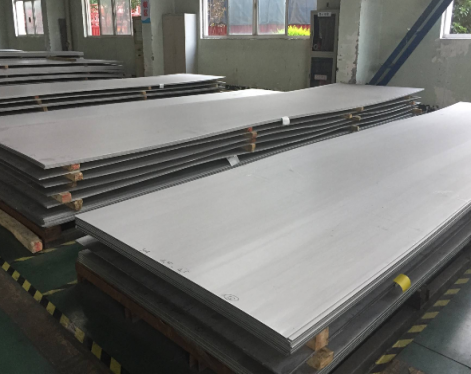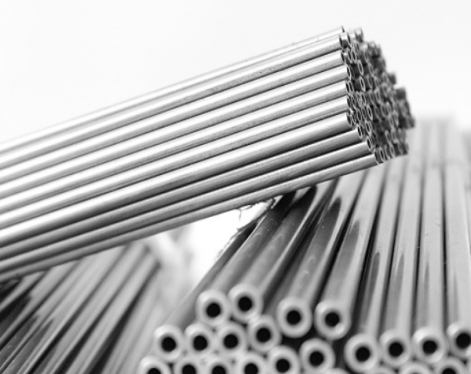Cold-rolled steel plates are steel plates produced by cold rolling process, with excellent mechanical properties and surface quality. During the production process, by controlling parameters such as rolling temperature, rolling speed and reduction, steel plates of different thicknesses, widths and lengths can be obtained. Compared with hot-rolled steel plates, cold-rolled steel plates have higher dimensional accuracy and better surface quality.
Cold-rolled steel plates are mainly made of low-carbon steel, ordinary carbon structural steel, high-strength steel, high-toughness steel, corrosion-resistant steel and other steel materials. The production process includes: raw material selection, hot rolling, pickling, cold rolling, quenching, tempering, trimming, rust prevention and other processes.

Cold rolled steel classification:
There are several different types of cold rolled steel, each with its own set of properties and uses. The most common types are:
1. Cold Rolled Steel (CR): CR is the most widely used cold rolled steel. It is made by cooling hot rolled steel to below its recrystallization temperature during the rolling process, which results in a microstructure filled with small spherical grains called "ferrite". This microstructure gives CR steels a unique combination of high strength and ductility, making them ideal for a wide range of applications, including automotive body panels, appliances, packaging cans, and building materials.
2. Annealed Cold Rolled Steel (ACR): ACR is another common cold rolled steel. Unlike CR steel, ACR is not cooled in rolls, but instead is heated above its recrystallization temperature and then cooled in air. This process results in a softer microstructure filled with large grains called "austenite". Austenite makes ACR steels less strong and ductile than CR steels, but they can still be used in many applications, such as furniture components and appliances.
3. Fully hardened cold rolled steel (FH): FH is the highest strength cold rolled steel. It is made by cooling the hot rolled steel to below its recrystallization temperature during the rolling process.
Classification of cold-rolled steel plates:
According to different thicknesses, cold-rolled steel plates can be divided into thin plates, medium plates and thick plates. Thin plates are usually used to manufacture light and thin parts and products, while medium plates and thick plates are suitable for manufacturing structural parts and heavy-loaded components.
Characteristics of cold-rolled steel plates:
1. High dimensional accuracy: Cold-rolled steel plates use high-precision rolling mills during the rolling process, so the dimensional accuracy and surface quality are very high.
2. Excellent mechanical properties: The mechanical properties of cold-rolled steel plates are stable, with high strength, good plasticity and toughness, and can meet the manufacturing needs of various complex parts.
3. Good weldability: Cold-rolled steel plates have good welding performance and can meet various welding process requirements.
4. Good processing performance: Cold-rolled steel plates are easy to process into various shapes and are widely used in various fields.
5. High surface finish: Cold-rolled steel plates undergo fine surface treatment, have high surface finish, and are not prone to pollution and oxidation.
Application of cold-rolled steel plates:
Cold-rolled steel plates are widely used in automobiles, home appliances, building materials, machinery manufacturing and other fields. Among them, the automotive field is the largest application field of cold-rolled steel plates, accounting for nearly 50% of the total demand.
Cold-rolled steel plates are used to manufacture parts such as car bodies, doors, roofs, chassis, etc. in automobile manufacturing, with the advantages of high strength, high toughness, and light weight.
In the field of home appliances, cold-rolled steel plates are mainly used to manufacture the outer shells and internal parts of refrigerators, air conditioners, washing machines and other products.
In the field of building materials, cold-rolled steel plates are mainly used to manufacture roof trusses, wall panels, roofing and other materials.
Cold-rolled steel plates are mainly made of low-carbon steel, ordinary carbon structural steel, high-strength steel, high-toughness steel, corrosion-resistant steel and other steel materials. The production process includes: raw material selection, hot rolling, pickling, cold rolling, quenching, tempering, trimming, rust prevention and other processes.

Cold rolled steel classification:
There are several different types of cold rolled steel, each with its own set of properties and uses. The most common types are:
1. Cold Rolled Steel (CR): CR is the most widely used cold rolled steel. It is made by cooling hot rolled steel to below its recrystallization temperature during the rolling process, which results in a microstructure filled with small spherical grains called "ferrite". This microstructure gives CR steels a unique combination of high strength and ductility, making them ideal for a wide range of applications, including automotive body panels, appliances, packaging cans, and building materials.
2. Annealed Cold Rolled Steel (ACR): ACR is another common cold rolled steel. Unlike CR steel, ACR is not cooled in rolls, but instead is heated above its recrystallization temperature and then cooled in air. This process results in a softer microstructure filled with large grains called "austenite". Austenite makes ACR steels less strong and ductile than CR steels, but they can still be used in many applications, such as furniture components and appliances.
3. Fully hardened cold rolled steel (FH): FH is the highest strength cold rolled steel. It is made by cooling the hot rolled steel to below its recrystallization temperature during the rolling process.
Classification of cold-rolled steel plates:
According to different thicknesses, cold-rolled steel plates can be divided into thin plates, medium plates and thick plates. Thin plates are usually used to manufacture light and thin parts and products, while medium plates and thick plates are suitable for manufacturing structural parts and heavy-loaded components.
Characteristics of cold-rolled steel plates:
1. High dimensional accuracy: Cold-rolled steel plates use high-precision rolling mills during the rolling process, so the dimensional accuracy and surface quality are very high.
2. Excellent mechanical properties: The mechanical properties of cold-rolled steel plates are stable, with high strength, good plasticity and toughness, and can meet the manufacturing needs of various complex parts.
3. Good weldability: Cold-rolled steel plates have good welding performance and can meet various welding process requirements.
4. Good processing performance: Cold-rolled steel plates are easy to process into various shapes and are widely used in various fields.
5. High surface finish: Cold-rolled steel plates undergo fine surface treatment, have high surface finish, and are not prone to pollution and oxidation.
Application of cold-rolled steel plates:
Cold-rolled steel plates are widely used in automobiles, home appliances, building materials, machinery manufacturing and other fields. Among them, the automotive field is the largest application field of cold-rolled steel plates, accounting for nearly 50% of the total demand.
Cold-rolled steel plates are used to manufacture parts such as car bodies, doors, roofs, chassis, etc. in automobile manufacturing, with the advantages of high strength, high toughness, and light weight.
In the field of home appliances, cold-rolled steel plates are mainly used to manufacture the outer shells and internal parts of refrigerators, air conditioners, washing machines and other products.
In the field of building materials, cold-rolled steel plates are mainly used to manufacture roof trusses, wall panels, roofing and other materials.









